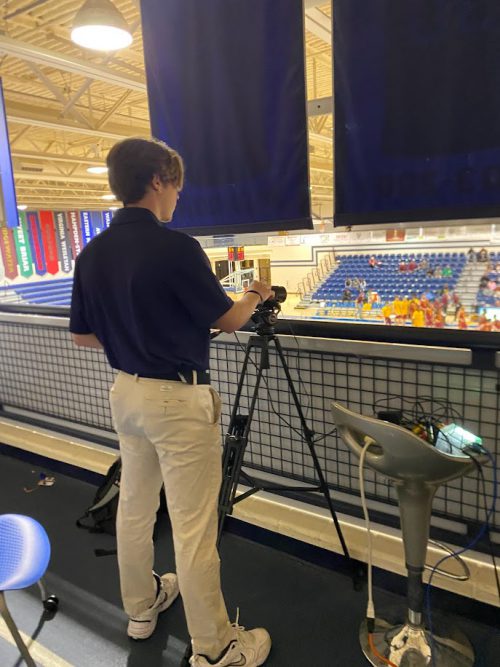The NFL league has come under scrutiny for their concussion protocols by their fans and former athletes as frequent head injuries of players have become a major concern.
On Sunday Sept. 25, Miami Dolphins star quarterback Tua Tagovailoa sustained a head injury after being hit in the head during a tackle by Buffalo Bills linebacker Matt Milano. After standing up on his own, he had trouble walking and fell back onto the field. The Dolphins soon after announced that Tagovailoa was questionable to return to the game but after passing concussion protocol he was allowed back in the game for the beginning of the second half.
During the next game on Thursday Sept. 29, Tagovailoa suffered a very similar head injury in a game against the Cincinnati Bengals, but this time it was diagnosed as a concussion. According to an article written by the Los Angeles Times, Tagovailoa laid on the field for seven minutes before he was eventually put on a stretcher and taken off the field.
According to Joe Schad on Twitter, Tagovailoa said, “There was a point where I was unconscious. I remember the entire night up until the point I got tackled. I don’t remember being carted off. I do remember some things from the ambulance and the hospital.”
What has brought this story so much attention is the backlash the NFL, the trainers and concussion protocols have received since Tagovailoa went down. Even though he has since come back and played, people are still upset and have brought to light the dangers his injury can have on his long term health. The neurotrauma consultant who looked at Tagovailoa has since been fired by the NFLPA after multiple mistakes were made during his evaluation according to reports.
According to NFL rules, players diagnosed with a concussion must follow a five step process in order to return to the field. Phase 1 is symptom limited activity, phase 2 is aerobic exercise, phase 3 is football specific exercise, phase 4 is club based non contact training drills and finally phase 5 is full football activity and clearance.
I feel like the NFL should have stricter rules for concussion protocol especially for instances like Tagovailoa’s during the Buffalo Bills game. For example, there should be different types of clearance based on the severity of the concussion sustained by the player.
By Colette Kearney
cmkearney@vwu.edu
Concussions have once again become a hot topic in football. The medical consequences surrounding football has always been a concern since the first ever football game played in 1869. Now, a professional football player, Tua Tagovailoa, has suffered two head injuries within a five day range and now the NFL is under scrutiny for the concussion protocols.
Tagovailoa’s first injury occurred in a game against the Buffalo Bills, where he was taken off the field and straight to the sidelines, but, 30 minutes later, Tagovailoa was back on the field. NFL fans started criticizing the league even more when, five days later, Tagovailoa was back on the field playing against the Cincinnati Bengals, only for him to suffer another bad head injury that led him to be unconscious.
Many people on Twitter have come out to express their concerns. Emmanuel Acho, a former linebacker and analyst for Fox News Sports, said, “Truth be told Tua should probably never have been playing. He displayed neurological trauma last week, we disregarded it, labeled it a ‘back injury’ & let him back in the game. Now, the whole world watch as he lay on the field helpless. When will we put player safety FIRST!”
The NFL is planning to strengthen their concussion protocols to better protect their players, but they have a long way to go. Currently, the protocols give the team doctor the final say in whether or not the player can come back, not the neurologist that is hired. I think this is kind of backwards, because if you are going to hire a person whose main focus is the human brain, then why don’t they have the final say?
If the league does strengthen their protocols, they need to start being stricter about it. Tagovailoa is most likely not the only player that has suffered a serious head injury in the league, and went back to playing like everything was normal. If this continues, then parents of young children will stop putting their kids in youth football leagues and go for another sport with a lower risk of getting concussions.
By Shirell Washington
sawashington@vwu.edu


